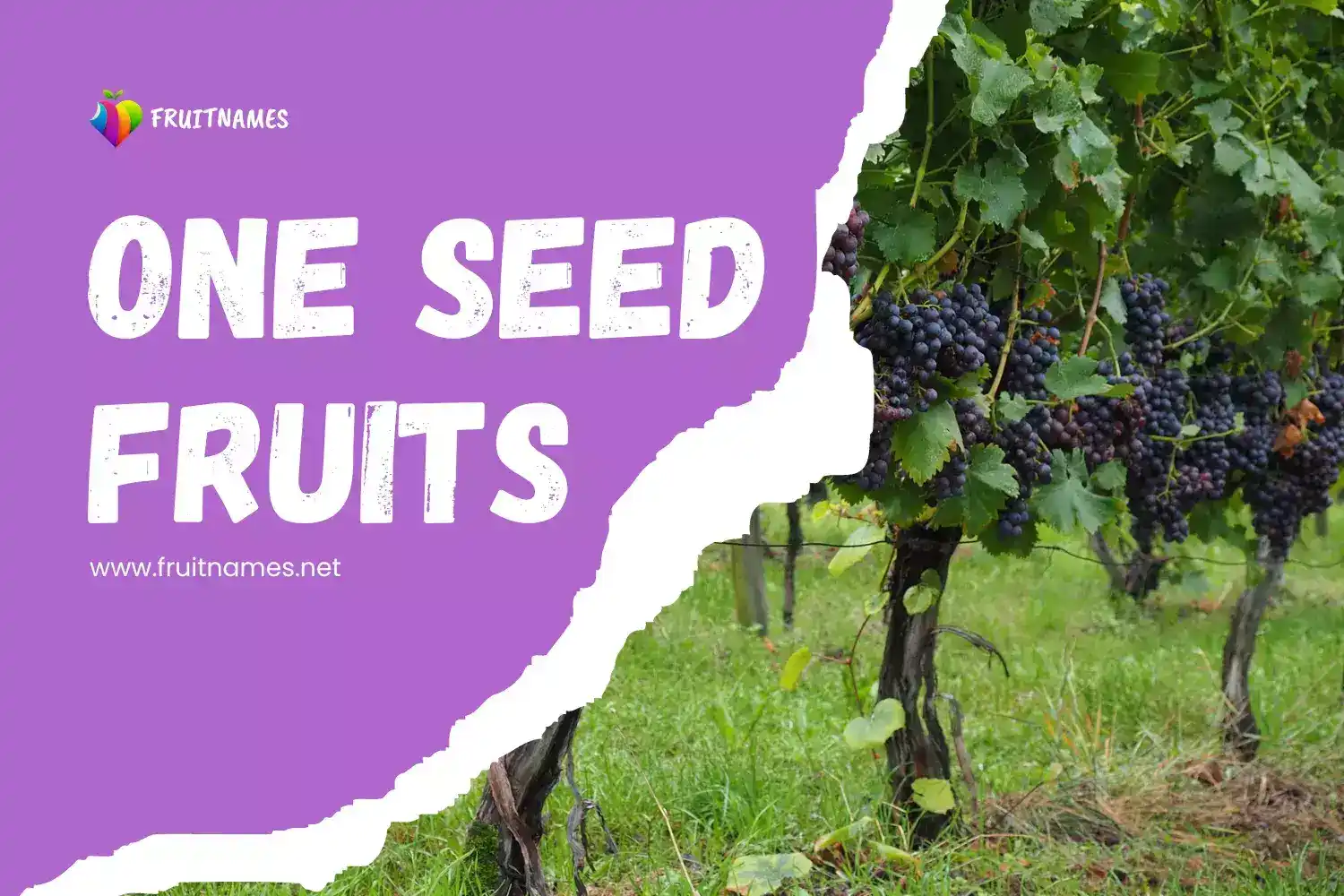Hey there, curious learners! Have you ever wondered about the different types of fruits that contain just one seed? Well, you’re in the right place! In this blog post, we will explore the fascinating world of one-seed fruits and discover their names in easy English language.
You might have heard the term one-seed fruit name before and probably wonder what it means. Don’t worry; we’ll break it down for you. “Some seed fruits” refer to fruits with only one tiny seed. These fruits are not only delicious but also fun to learn about.
50 One Seed Fruits In English And Hindi
| Serial Number | Fruits names | English Name | Hindi Name |
| 1 |  | Mango | आम |
| 2 |  | Peach | आड़ू |
| 3 | 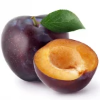 | Plum | आलू बुखारा |
| 4 | 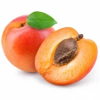 | Apricot | खुबानी |
| 5 |  | Lychee | लीची |
| 6 |  | Avocado | एवोकाडो |
| 7 | 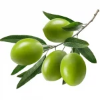 | Olive | जैतून |
| 8 |  | Date | खजूर |
| 9 | 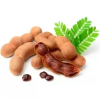 | Tamarind | इमली |
| 10 | 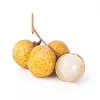 | Longan | लोंगन |
| 11 | 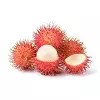 | Rambutan | रैम्बुटन |
| 12 | 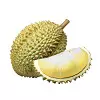 | Durian | डुरियन |
| 13 |  | Sapodilla | चिकू |
| 14 |  | Indian Gooseberry | अमलक |
| 15 | 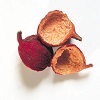 | Quandong | क्वैंडोंग |
| 16 | 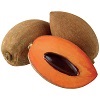 | Mamey Sapote | मैमी सपोटे |
| 17 | 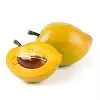 | Canistel | कैनिस्टेल |
| 18 | 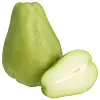 | Chayote | चोवक |
| 19 | 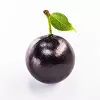 | Jaboticaba | जाबोटिकाबा |
Health Benefits of One-Seed Fruits: Nutrient-Rich and Delicious
1. Mango

Mango (आम): Mangoes are often called the “king of fruits” and are known for their sweet and juicy flesh. They are rich in vitamins (mainly C and A), minerals, and antioxidants. Mangoes are widely used in various culinary applications, from desserts to salads.
1. Nutrition Information (Per 100 Grams) For Mango
| Nutrient | Amount per 100g |
|---|---|
| Calories | 60 kcal |
| Protein | 0.82 g |
| Carbohydrates | 15 g |
| Sugars | 13.7 g |
| Dietary Fiber | 1.6 g |
| Fat | 0.38 g |
| Vitamin C | 36.4 mg |
| Vitamin A | 54 µg |
| Potassium | 168 mg |
| Magnesium | 9 mg |

2. Benefits of Mango
- Rich in Vitamins: Mangoes are a great source of vitamin C, which is essential for a healthy immune system. They also contain vitamin A, which is important for vision and skin health.
- Antioxidant Properties: Mangoes are rich in antioxidants, such as beta-carotene, which can help protect the body against free radical damage and reduce the risk of chronic diseases.
- Dietary Fiber: The dietary fiber in mangoes aids digestion and helps maintain a healthy digestive system. It can also contribute to a feeling of fullness, which may be beneficial for weight management.
3. Uses of Mango
- Fresh Consumption: Mangoes are commonly eaten fresh, either on their own or as part of fruit salads. Their sweet and juicy flavour makes them a delicious and refreshing snack.
- Smoothies and Juices: Mangoes can be blended into smoothies or juices, adding a tropical and sweet flavor to the beverages. They pair well with other fruits and yogurt.
- Culinary Applications: Mangoes are used in various culinary dishes, both sweet and savory. They can be added to salsas, chutneys, desserts, and even savory dishes to enhance flavor.
4. Additional Information
- Seasonal Fruit: Mangoes are often seasonal, with peak availability in warmer months. Different varieties of mangoes may have varying flavors and textures.
- Cultural Significance: Mangoes hold cultural significance in many countries and are often considered the “king of fruits.” They are used in various festivals and celebrations.
- Ripening Process: Mangoes can be enjoyed at different stages of ripeness. Some prefer them when firm and slightly tart, while others enjoy the sweetness that comes with full ripeness.
2. Peach

Peach (आड़ू): Peaches are juicy, sweet fruits with fuzzy skin. They are a good source of vitamins A and C and contain antioxidants. Peaches are often enjoyed fresh or used in pies, cobblers, and preserves.
1. Nutrition Information (Per 100 Grams) For Peach
| Nutrient | Amount |
|---|---|
| Calories | 39 kcal |
| Protein | 0.9 g |
| Carbohydrates | 9.5 g |
| Fiber | 1.5 g |
| Sugars | 8.4 g |
| Fat | 0.3 g |
| Vitamins and Minerals | |
| Vitamin C | 6.6 mg |
| Vitamin A | 326 IU |
| Potassium | 190 mg |

2. Benefits of Peach
- Rich in Antioxidants: Peaches are packed with antioxidants, including vitamin C, which helps neutralize free radicals in the body, potentially reducing the risk of chronic diseases.
- Promotes Skin Health: The presence of vitamin A in peaches contributes to healthy skin by supporting cell regeneration and promoting a radiant complexion.
- Aids Digestion: Peaches are a good source of dietary fiber, which promotes digestive health by preventing constipation and supporting a healthy gut microbiota.
3. Uses of Peach
- Fresh Consumption: Enjoy peaches as a refreshing snack by eating them fresh. The natural sweetness and juiciness make them a delicious and nutritious treat.
- Smoothies and Salads: Add sliced peaches to smoothies or salads to enhance flavor and nutrition. Their natural sweetness can complement both sweet and savory dishes.
- Canning and Preserves: Preserve the goodness of peaches by canning or making jams and preserves. This allows you to enjoy their flavor throughout the year, even when they’re out of season.
4. Much More:
- Hydration: Peaches have a high water content, contributing to hydration. Incorporating them into your diet can help maintain proper fluid balance.
- Low in Calories: With relatively low calories, peaches can be a satisfying and guilt-free snack for those looking to manage their calorie intake.
- Vitamin Boost: In addition to vitamins C and A, peaches contain vitamins like K and E, and a range of B vitamins, contributing to overall health and well-being.
3. Plum

Plum (आलू बुखारा): Plums are small, sweet-tasting fruits with smooth skin. They are a good source of dietary fibre, vitamin K, and vitamin C. Plums are eaten fresh and used in jams and baked goods.
1. Nutritional Information (Per 100 grams of Plums)
| Nutrient | Amount |
|---|---|
| Calories | 46 kcal |
| Total Fat | 0.2 g |
| Cholesterol | 0 mg |
| Sodium | 0 mg |
| Potassium | 157 mg |
| Total Carbohydrates | 11.4 g |
| Dietary Fiber | 1.4 g |
| Sugars | 9.9 g |
| Protein | 0.7 g |
| Vitamin C | 9.5 mg |
| Vitamin A | 345 IU |
| Calcium | 6 mg |
| Iron | 0.2 mg |
| Magnesium | 7 mg |

2. Benefits of Plums
- Rich in Antioxidants: Plums are packed with antioxidants, such as beta-carotene and vitamin C, which help protect the body’s cells from damage caused by free radicals.
- Supports Digestive Health: The dietary fiber in plums contributes to healthy digestion by preventing constipation and promoting regular bowel movements.
- Bone Health: Plums contain minerals like potassium and vitamin K, which play a role in maintaining bone health and preventing bone-related disorders.
3. Uses of Plums
- Fresh Consumption: Enjoy plums as a delicious and nutritious snack by eating them fresh. They can also be added to fruit salads for a burst of flavor.
- Cooking and Baking: Plums can be used in various culinary applications, such as making jams, jellies, and sauces. They can also be incorporated into baked goods like pies and muffins.
- Drying and Preserving: Dried plums, commonly known as prunes, are a popular snack and can be used in both sweet and savory dishes. They are also known for their natural laxative properties.
4. Additional Information
- Varieties: There are various types of plums, each with its unique flavor and color. Common varieties include European plums, Japanese plums, and Damson plums.
- Seasonality: Plums are typically in season during the late spring and summer months, depending on the variety and geographical location.
- Health Considerations: While plums offer numerous health benefits, individuals with certain health conditions, such as kidney issues, may need to moderate their intake due to the fruit’s oxalate content. It’s always advisable to consult with a healthcare professional for personalized dietary advice.
4. Apricot

Apricot (खुबानी): Apricots have a sweet and slightly tart flavour with a velvety skin. They are rich in vitamins A and C and provide dietary fibre. Apricots are enjoyed fresh, dried, or used in baking and preserves.
1. Nutritional Information (Per 100 grams of Apricot)
| Nutrient | Amount (per 100g) |
|---|---|
| Calories | 48 kcal |
| Protein | 1.4 g |
| Fat | 0.4 g |
| Carbohydrates | 11 g |
| Fiber | 2 g |
| Sugars | 9.2 g |
| Vitamin A | 1925 IU |
| Vitamin C | 10 mg |
| Potassium | 259 mg |

Benefits of Apricot
- Rich in Antioxidants: Apricots are a good source of antioxidants, particularly beta-carotene (a form of vitamin A) and vitamin C, which help protect cells from damage caused by free radicals.
- Supports Eye Health: The high content of vitamin A in apricots is beneficial for maintaining healthy vision and may contribute to the prevention of age-related macular degeneration.
- Aids Digestive Health: Apricots are a good source of dietary fiber, promoting healthy digestion by preventing constipation and supporting regular bowel movements.
Uses of Apricot
- Snacking: Dried apricots make for a convenient and healthy snack. They are a portable source of energy and nutrients.
- Baking and Cooking: Fresh or dried apricots can be used in a variety of culinary applications, including desserts, jams, sauces, and salads.
- Smoothies: Apricots can be blended into smoothies to add natural sweetness and a boost of vitamins. Combine them with yogurt and other fruits for a nutritious beverage.
Much More
- Skin Health: The antioxidants in apricots may contribute to healthier skin by protecting against oxidative stress and promoting collagen production.
- Bone Health: Apricots contain minerals like calcium and potassium, which are essential for maintaining strong and healthy bones.
- Weight Management: With relatively low calories and a good amount of fiber, apricots can be included in a balanced diet to support weight management and overall health.
5. Lychee

Lychee (लीची): Lychees are small, translucent fruits with a sweet and floral taste. They are a good source of vitamin C and antioxidants. Lychees are often eaten fresh and are also used in desserts and beverages.
1. Nutritional Content of Lychee (per 100 grams of Lychee)
| Nutrient | Amount |
|---|---|
| Calories | 66 |
| Protein | 0.9 g |
| Total Fat | 0.4 g |
| Carbohydrates | 16.5 g |
| Fiber | 1.3 g |
| Sugar | 9.2 g |
| Vitamin C | 136 mg |
| Vitamin B6 | 0.1 mg |
| Niacin (B3) | 0.6 mg |
| Riboflavin (B2) | 0.1 mg |
| Folate (B9) | 14 µg |
| Potassium | 171 mg |
| Copper | 0.1 mg |
| Phosphorus | 31 mg |
| Magnesium | 10 mg |
| Manganese | 0.1 mg |

2. Benefits of Lychee
- Rich in Vitamin C: Lychee is a potent source of vitamin C, which is essential for boosting the immune system, promoting skin health, and acting as an antioxidant that helps protect cells from damage.
- Antioxidant Properties: Lychee contains various antioxidants, including polyphenols and flavonoids, which may help combat oxidative stress in the body and reduce the risk of chronic diseases.
- Good Source of Potassium: Potassium in lychee contributes to maintaining proper fluid balance, supporting heart health, and aiding in muscle contractions.
3. Uses of Lychee
- Fresh Consumption: The most common and simple way to enjoy lychee is by peeling and consuming it fresh. The sweet and juicy flesh makes for a delicious snack or addition to fruit salads.
- Beverages: Lychee can be used to flavor a variety of beverages, including juices, smoothies, and cocktails. Lychee juice is popular for its refreshing taste.
- Desserts and Cuisines: Lychee is often used in desserts, ice creams, and Asian cuisines. Its unique flavor adds a tropical touch to dishes, and the fruit complements both sweet and savory recipes.
4. Much More
- Culinary Versatility: Lychee is used in a wide range of dishes, from salads to main courses, imparting a distinctive sweetness to the recipes.
- Skin Health: Some people believe that the antioxidants in lychee may contribute to healthy skin by combating free radicals and promoting collagen formation.
- Hydration: With its high water content, lychee can contribute to hydration, making it a refreshing choice, especially in hot weather.
6. Avocado

Avocado (एवोकाडो): Avocado is a creamy, green fruit known for its healthy monounsaturated fats. It is rich in vitamins E, K, C, and B6 and potassium. Avocado is used in salads, spreads, and toppings for various dishes.
1. Nutritional Content (Per 100 grams of Avocado)
| Nutrient | Amount |
|---|---|
| Calories | 160 |
| Total Fat | 14 g |
| Saturated Fat | 2 g |
| Trans Fat | 0 g |
| Cholesterol | 0 mg |
| Sodium | 7 mg |
| Total Carbohydrates | 8.5 g |
| Dietary Fiber | 6.7 g |
| Sugars | 0.7 g |
| Protein | 2 g |
| Vitamin D | 0 mcg (0%) |
| Calcium | 12 mg (1%) |
| Iron | 0.6 mg (3%) |
| Potassium | 485 mg (10%) |
| Vitamin A | 7 mcg (1%) |
| Vitamin C | 10 mg (17%) |
| Vitamin E | 2.1 mg (11%) |
| Vitamin K | 21 mcg (26%) |
| Folate | 81 mcg (20%) |

2. Benefits of Avocado
- Heart Health:
- Avocados are rich in monounsaturated fats, which are heart-healthy fats that may help lower bad cholesterol levels and reduce the risk of heart disease.
- Nutrient-Rich:
- Avocados are a nutrient-dense fruit, providing a good source of vitamins and minerals such as potassium, vitamin K, vitamin E, vitamin C, and B-vitamins.
- Weight Management:
- Despite their relatively high calorie content, avocados can be beneficial for weight management. The monounsaturated fats and fiber in avocados contribute to a feeling of satiety, potentially reducing overall calorie intake.
3. Uses of Avocado
- Culinary Applications:
- Avocados are versatile in the kitchen and can be used in various dishes, from salads and sandwiches to dips like guacamole. Their creamy texture makes them a popular addition to smoothies and desserts.
- Skin and Hair Care:
- Avocado oil, derived from the fruit, is often used in skincare products due to its moisturizing properties. The natural oils in avocados can also be applied topically for softening and hydrating skin and hair.
- Healthy Fat Substitute:
- Avocado can be used as a healthier alternative to traditional spreads like butter or mayonnaise. Mashed avocado works well as a spread on toast or as a topping for crackers, providing a creamy texture with added nutritional benefits.
4. Additional Information
- Ripening Process: Avocados ripen after they are harvested. They are usually firm when purchased and can be ripened at room temperature. The skin color changes from green to dark purple or black when fully ripe.
- Varieties: There are various avocado varieties, with Hass being one of the most popular. Each variety may have slightly different taste, texture, and nutritional profiles.
- Versatility: Avocados are versatile and can be used in both savory and sweet dishes. They are also used in smoothies, desserts, and as a substitute for butter or oil in some recipes.
7. Olive

Olive (जैतून): Olives are small, oval-shaped fruits commonly used to produce olive oil. They are a source of healthy monounsaturated fats and antioxidants. Olives are a staple in Mediterranean cuisine, used in salads, pastas, and snacks.
1. Nutritional Content (Per 100 grams of Olives)
| Nutrient | Amount |
|---|---|
| Calories | 115 |
| Total Fat | 11 g |
| Saturated Fat | 1.5 g |
| Trans Fat | 0 g |
| Cholesterol | 0 mg |
| Sodium | 735 mg |
| Total Carbohydrates | 6 g |
| Dietary Fiber | 3.3 g |
| Sugars | 0.5 g |
| Protein | 0.8 g |
| Vitamin D | 0 mcg (0%) |
| Calcium | 52 mg (5%) |
| Iron | 3.3 mg (18%) |
| Potassium | 88 mg (2%) |
| Vitamin A | 720 IU (14%) |
| Vitamin C | 0.9 mg (2%) |
| Vitamin E | 1.7 mg (9%) |
| Vitamin K | 1.4 mcg (2%) |
| Folate | 3 mcg (1%) |

2. Benefits of Olives
- Heart Health:
- Olives are a good source of monounsaturated fats, particularly oleic acid, which has been linked to heart health. These fats may help lower the risk of cardiovascular diseases by reducing bad cholesterol levels.
- Antioxidant Properties:
- Olives contain compounds like polyphenols and vitamin E, which have antioxidant properties. These antioxidants help neutralize free radicals in the body, potentially reducing oxidative stress and inflammation.
- Bone Health:
- Olives provide a modest amount of calcium, which is essential for maintaining strong and healthy bones. Adequate calcium intake is crucial for preventing conditions like osteoporosis.
3. Uses of Olives
- Culinary Uses:
- Olives are a popular ingredient in Mediterranean cuisine and are used in various dishes, including salads, pasta, and pizzas. They can be enjoyed on their own or added to appetizers and tapenades.
- Olive Oil Production:
- Olives are a primary source of olive oil. The oil extracted from olives is widely used in cooking and salad dressings. It is known for its rich flavor and potential health benefits.
- Snacking:
- Olives make for a nutritious and flavorful snack. They are available in various varieties, such as green and black, and can be enjoyed as a standalone snack or combined with cheese and nuts for a tasty appetizer.
4. Additional Information
- Varieties: There are many varieties of olives, each with its own taste and texture. Common varieties include Kalamata, Manzanilla, and Castelvetrano.
- Processing Methods: Olives undergo various processing methods, such as curing and fermentation, to reduce bitterness and enhance flavor. The curing process can involve brining, dry curing, or lye curing.
- Health Benefits: The consumption of olives and olive oil has been associated with various health benefits, including improved heart health, reduced inflammation, and potential protection against certain chronic diseases.
8. Dates

Date (खजूर): Dates are sweet and chewy fruits known for their high energy content. They are a good source of dietary fibre, vitamins (particularly B vitamins), and minerals like potassium and magnesium. Dates are often consumed as a natural sweetener in desserts and snacks.
1. Nutritional Content (Per 100 grams of Dates)
| Nutrient | Amount |
|---|---|
| Calories | 282 |
| Total Fat | 0.4 g |
| Saturated Fat | 0 g |
| Trans Fat | 0 g |
| Cholesterol | 0 mg |
| Sodium | 2 mg |
| Total Carbohydrates | 75 g |
| Dietary Fiber | 8 g |
| Sugars | 63 g |
| Protein | 2.5 g |
| Vitamin D | 0 mcg (0%) |
| Calcium | 39 mg (4%) |
| Iron | 1 mg (6%) |
| Potassium | 656 mg (14%) |
| Vitamin A | 10 IU (0%) |
| Vitamin C | 0.4 mg (1%) |
| Vitamin E | 0.1 mg (1%) |
| Vitamin K | 2.7 mcg (3%) |
| Folate | 19 mcg (5%) |

2. Benefits of Dates
- Rich in Nutrients:
- Dates are a good source of essential nutrients, including potassium, magnesium, vitamin B6, and iron. These nutrients play a crucial role in maintaining overall health, supporting energy metabolism, and preventing deficiencies.
- Natural Sweetener:
- Dates are naturally sweet, making them a healthier alternative to refined sugars in various recipes. They can be used to sweeten smoothies, desserts, and energy bars without the need for added sugars.
- Digestive Health:
- Dates are rich in dietary fiber, which promotes digestive health by preventing constipation and supporting regular bowel movements. Fiber also helps in maintaining a feeling of fullness and controlling blood sugar levels.
3. Uses of Dates
- Snacking:
- Dates can be enjoyed as a quick and nutritious snack on their own. They are naturally sweet and provide a good energy boost, making them a convenient and healthy option for a midday pick-me-up.
- Baking and Cooking:
- Dates are a popular ingredient in baking. They can be chopped and added to various baked goods such as cookies, muffins, and energy bars. Dates can also be used in savory dishes, like tagines and couscous.
- Natural Sweetener in Smoothies:
- Dates can be blended into smoothies to add natural sweetness and a caramel-like flavor. They not only enhance the taste but also contribute to the nutritional content of the smoothie.
4. Additional Information
- Varieties: There are various varieties of dates, including Medjool, Deglet Noor, and Barhi, each with its own flavor and texture profile.
- Culinary Traditions: Dates have been a staple food in Middle Eastern and North African cuisines for centuries and are often used in traditional dishes.
- Natural Energy Boost: Due to their natural sugars, dates are a quick and easily digestible source of energy, making them a popular choice for athletes or as a pre-workout snack.
9. Tamarind

Tamarind (इमली): Tamarind is a tangy fruit used for its unique flavour in many cuisines. It is a good source of vitamins (especially vitamin C), dietary fibre, and antioxidants. Tamarind is commonly used in sauces, chutneys, and beverages.
1. Nutritional Content (Per 100 grams of Tamarind)
| Nutrient | Amount |
|---|---|
| Calories | 239 |
| Total Fat | 0.6 g |
| Saturated Fat | 0.1 g |
| Trans Fat | 0 g |
| Cholesterol | 0 mg |
| Sodium | 28 mg |
| Total Carbohydrates | 62.5 g |
| Dietary Fiber | 5.1 g |
| Sugars | 57.4 g |
| Protein | 2.8 g |
| Vitamin D | 0 mcg (0%) |
| Calcium | 74 mg (7%) |
| Iron | 2.8 mg (16%) |
| Potassium | 628 mg (13%) |
| Vitamin A | 3 IU (0%) |
| Vitamin C | 3.5 mg (6%) |
| Vitamin E | 0.1 mg (1%) |
| Vitamin K | 2.8 mcg (4%) |
| Folate | 14 mcg (4%) |

2. Benefits of Tamarind
- Rich in Antioxidants:
- Tamarind contains various antioxidants, including vitamin C and beta-carotene. These antioxidants help neutralize free radicals in the body, potentially reducing oxidative stress and inflammation.
- Digestive Health:
- Tamarind has natural laxative properties and is rich in dietary fiber. It can help promote healthy digestion, relieve constipation, and support regular bowel movements.
- Nutrient Content:
- Tamarind is a good source of essential nutrients such as iron, potassium, calcium, and magnesium. These minerals play a vital role in maintaining bone health, electrolyte balance, and overall well-being.
3. Uses of Tamarind
- Culinary Applications:
- Tamarind is a key ingredient in many cuisines around the world. It adds a unique sweet and tangy flavor to dishes. Tamarind paste is commonly used in sauces, chutneys, curries, and soups.
- Beverages:
- Tamarind is used to make refreshing beverages, such as tamarind juice or agua de tamarindo. The juice is sweetened and often served chilled, providing a cooling and flavorful drink.
- Snacks and Candies:
- Tamarind is used to make various snacks and candies. Tamarind candy, for example, is a popular treat that combines the tanginess of tamarind with sweetness and sometimes chili powder for a unique flavor experience.
4. Additional Information:
- Origin: Tamarind is native to tropical Africa but is now widely cultivated in many tropical regions around the world.
- Tamarind Tree: The tamarind tree produces pod-like fruits that contain a sticky pulp. The pulp is extracted and used in various culinary and medicinal applications.
- Traditional Medicine: In traditional medicine, tamarind is used for its potential health benefits, including anti-inflammatory properties and as a remedy for digestive issues.
10. Longan

Longan (लोंगन): Longans are small, translucent fruits with a sweet and floral flavour. They are a source of vitamins C and B and contain antioxidants. Longans are typically eaten fresh and are also used in desserts and beverages.
1. Nutritional Content (Per 100 grams of Longans)
| Nutrient | Amount |
|---|---|
| Calories | 60 |
| Total Fat | 0.3 g |
| Saturated Fat | 0.1 g |
| Trans Fat | 0 g |
| Cholesterol | 0 mg |
| Sodium | 2 mg |
| Total Carbohydrates | 15 g |
| Dietary Fiber | 1.3 g |
| Sugars | 9.2 g |
| Protein | 1.3 g |
| Vitamin D | 0 mcg (0%) |
| Calcium | 1 mg (0%) |
| Iron | 0.2 mg (1%) |
| Potassium | 266 mg (6%) |
| Vitamin A | 0 IU (0%) |
| Vitamin C | 84 mg (140%) |
| Vitamin E | 0.2 mg (1%) |
| Vitamin K | 0.1 mcg (0%) |
| Folate | 3 mcg (1%) |

2. Benefits of Longans
- Rich in Vitamin C:
- Longans are an excellent source of vitamin C, an antioxidant that supports the immune system, promotes skin health, and aids in the absorption of iron from plant-based foods.
- Energy Boost:
- Longans provide a moderate amount of natural sugars, including glucose and fructose, which can offer a quick energy boost. They can be a good snack option for a natural and healthy energy source.
- Mineral Content:
- Longans contain minerals such as potassium and iron. Potassium is essential for maintaining electrolyte balance and supporting heart health, while iron is crucial for the formation of red blood cells and oxygen transport.
3. Uses of Longans
- Fresh Consumption:
- Longans are commonly consumed fresh as a fruit snack. They have a sweet and floral flavor, and their juicy texture makes them a refreshing treat. Simply peel the outer skin to reveal the translucent fruit inside.
- Desserts and Beverages:
- Longans are often used in desserts, fruit salads, and beverages. They can be added to ice creams, sorbets, and cocktails to enhance the flavor and add a unique tropical touch.
- Culinary Applications:
- In some Asian cuisines, longans are used in savory dishes as well. They can be added to stir-fries, sauces, and glazes for a hint of sweetness and a burst of flavor.
4. Additional Information:
- Origin: Longan is native to Southeast Asia and is cultivated in various tropical and subtropical regions.
- Appearance: The fruit is small, round, and translucent with a smooth, brown peel and a translucent, juicy flesh.
- Related to Lychee: Longan is closely related to lychee and rambutan, belonging to the same Sapindaceae family. It shares similar flavor profiles with these tropical fruits.
11. Rambutan

Rambutan (रैम्बुटन): Rambutans are similar in taste to lychees, with sweet and juicy flesh. They are a source of vitamin C and dietary fibre. Rambutans are enjoyed fresh and are a popular tropical fruit.
1. Nutritional Content of Rambutan (per 100 grams)
| Nutrient | Amount |
|---|---|
| Calories | 68 |
| Total Fat | 0.9 g |
| Saturated Fat | 0.3 g |
| Cholesterol | 0 mg |
| Sodium | 11 mg |
| Total Carbohydrates | 16.5 g |
| Dietary Fiber | 0.9 g |
| Sugars | 9.5 g |
| Protein | 0.9 g |
| Vitamin C | 20.9 mg |
| Calcium | 22 mg |
| Iron | 0.35 mg |
| Potassium | 42 mg |
| Phosphorus | 9 mg |
| Magnesium | 10 mg |
| Water | 68.5 g |

2. Benefits of Rambutan
- Rich in Vitamin C: Rambutan is a good source of vitamin C, which is essential for a healthy immune system, skin health, and overall well-being.
- Antioxidant Properties: The fruit contains antioxidants that may help neutralize harmful free radicals in the body, potentially reducing the risk of chronic diseases.
- Dietary Fiber: Rambutan provides dietary fiber, which aids in digestion, promotes a feeling of fullness, and supports gut health.
3. Uses of Rambutan
- Fresh Consumption: Rambutan is typically enjoyed fresh, peeled, and eaten as a sweet and juicy snack.
- Salads and Desserts: The fruit can be added to fruit salads, desserts, or used as a garnish to enhance the visual appeal of various dishes.
- Juice and Beverages: Rambutan can be juiced to make refreshing beverages, adding a unique tropical flavor to drinks.
4. Additional Information
- Origin: Rambutan is native to Southeast Asia but is now cultivated in tropical regions worldwide.
- Appearance: The fruit has a hairy, red or yellow peel and a translucent, juicy flesh with a mildly sweet and floral flavor.
- Seasonality: Rambutan is a seasonal fruit, with peak availability during certain times of the year, depending on the region.
12. Ackee

Ackee (ऐकी): Ackee is a tropical fruit known for its creamy texture and mild, nutty flavour. It is rich in vitamins and minerals, particularly vitamin C and potassium. Ackee is a Jamaican cuisine staple and is often used in savoury dishes.
1. Nutritional Content (Per 100 grams of Ackee)
| Nutrient | Amount |
|---|---|
| Calories | 151 |
| Total Fat | 10 g |
| Saturated Fat | 2.2 g |
| Trans Fat | 0 g |
| Cholesterol | 0 mg |
| Sodium | 7 mg |
| Total Carbohydrates | 19 g |
| Dietary Fiber | 2.6 g |
| Sugars | 8 g |
| Protein | 2.9 g |
| Vitamin D | 0 mcg (0%) |
| Calcium | 24 mg (2%) |
| Iron | 1 mg (6%) |
| Potassium | 370 mg (8%) |
| Vitamin A | 0 IU (0%) |
| Vitamin C | 29 mg (48%) |
| Vitamin E | 0.7 mg (4%) |
| Vitamin K | 0.5 mcg (1%) |
| Folate | 14 mcg (4%) |

2. Benefits of Ackee
- Rich in Vitamin C:
- Ackee is a good source of vitamin C, an antioxidant that supports the immune system, helps in the absorption of iron, and promotes healthy skin.
- Dietary Fiber:
- Ackee contains dietary fiber, which is beneficial for digestive health. Fiber helps regulate bowel movements, prevent constipation, and may contribute to a feeling of fullness.
- Nutrient Content:
- Ackee provides various essential nutrients, including potassium, iron, and vitamin E. These nutrients play roles in maintaining electrolyte balance, supporting blood health, and acting as antioxidants.
3. Uses of Ackee
- Ackee and Saltfish:
- The most famous use of ackee is in the traditional Jamaican dish called “ackee and saltfish.” Ackee is typically cooked with salted codfish, onions, tomatoes, and various spices. It’s a flavorful and hearty dish often served with bread or fried dumplings.
- Side Dish:
- Ackee can be used as a side dish in various Caribbean recipes. It pairs well with rice and peas, breadfruit, or fried plantains, adding a unique texture and flavor to the meal.
- In Salads or Curries:
- Ackee can be incorporated into salads or curries, providing a tropical twist to these dishes. It has a mild, buttery taste that complements other ingredients well.
4. Additional Information
- Caution: The unripe and inedible parts of the ackee fruit contain a toxic compound called hypoglycin A. Proper harvesting and processing are crucial to avoid exposure to this toxin. Only the arils (the edible portion) should be consumed.
- Ripening Process: Ackee pods are harvested when mature but unripe. They must go through a ripening process before consumption, during which the toxic compounds decrease, and the arils open and become edible.
- Culinary Tradition: Ackee has cultural significance in Jamaican cuisine and is featured prominently in local dishes. The “Ackee and Saltfish” dish is often considered the national dish of Jamaica.
13. Lulo
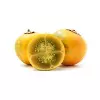
Lulo (लुलो): Lulo, also known as naranjilla, has a citrusy and tart flavour. It is a good source of vitamin C and dietary fibre. Lulo is commonly used in beverages and is a popular fruit in South America.
1. Nutritional Content (Per 100 grams of Lulo)
| Nutrient | Amount |
|---|---|
| Calories | 28 |
| Total Fat | 0.5 g |
| Saturated Fat | 0.1 g |
| Trans Fat | 0 g |
| Cholesterol | 0 mg |
| Sodium | 2 mg |
| Total Carbohydrates | 7 g |
| Dietary Fiber | 2.4 g |
| Sugars | 2.9 g |
| Protein | 1.4 g |
| Vitamin D | 0 mcg (0%) |
| Calcium | 17 mg (2%) |
| Iron | 0.6 mg (3%) |
| Potassium | 218 mg (5%) |
| Vitamin A | 130 IU (3%) |
| Vitamin C | 8.6 mg (14%) |
| Vitamin E | 0.2 mg (1%) |
| Vitamin K | 0.3 mcg (0%) |
| Folate | 6 mcg (2%) |

2. Benefits of Lulo
- Rich in Vitamin C:
- Lulo is a good source of vitamin C, an antioxidant that supports the immune system, helps the body absorb iron, and promotes healthy skin.
- Dietary Fiber:
- Lulo contains dietary fiber, which is beneficial for digestive health. Fiber helps prevent constipation, regulates blood sugar levels, and may contribute to a feeling of fullness.
- Low in Calories:
- Lulo is a low-calorie fruit, making it a healthy snack option for those looking to manage their calorie intake. It provides essential nutrients without adding excessive calories to the diet.
3. Uses of Lulo
- Refreshing Juices:
- Lulo is often used to make refreshing tropical juices. The fruit’s unique flavor adds a delightful twist to beverages. Lulo juice can be sweetened to taste and served over ice for a cooling and flavorful drink.
- Sauces and Salsas:
- Lulo can be used to prepare sauces and salsas that complement both savory and sweet dishes. The fruit’s tangy and citrusy flavor pairs well with various ingredients, enhancing the overall taste of the dish.
- Fresh Consumption:
- Lulo can be enjoyed fresh by cutting the fruit open and scooping out the pulp. It can be eaten on its own or added to fruit salads for a burst of tropical flavor.
4. Additional Information
- Appearance: Lulo has a distinctive appearance with bright green, spiky skin and juicy, aromatic flesh. The inner pulp is surrounded by a jelly-like substance.
- Culinary Tradition: Lulo is a common ingredient in South American cuisine, especially in countries like Colombia and Ecuador, where it is used in a variety of culinary preparations.
- Nutrient Variability: The nutritional content of lulo may vary based on factors such as cultivation practices, ripeness, and growing conditions.
Seasonal Harvest: When to Enjoy Your Favorite One-Seed Fruits

- Mango: Mangoes are usually in season during the summer, typically from April to August, but this can vary depending on the region.

- Peach: Peaches are typically in season in the summer, with the peak season occurring from June to August in many regions.

- Plum: Plums are generally in season during the late summer and early fall, typically from July to September.

- Apricot: Apricots are typically in season during the late spring and early summer, usually from May to July.

- Lychee: Lychees are typically in season during the early summer months, from May to July.

- Avocado: Avocados are available year-round in some regions but are often most abundant during the summer and fall.

- Olive: Olives are typically harvested in the late summer and early fall months.

- Date: Dates are usually harvested from September to October in the fall.

- Tamarind: Tamarinds are typically in season during the late summer and fall months.

- Longan: Longans are often in season during the summer, typically from June to August.

- Rambutan: Rambutans are typically in season during the late summer and early fall months.

- Ackee: Ackee is often in season in tropical regions year-round.

- Kiwano: Kiwanos are usually in season during the summer and early fall.
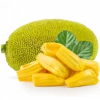
- Jackfruit: Jackfruits can have different seasons depending on the region, but they are often available during the summer and fall.

- Sapodilla: Sapodillas are available year-round in tropical climates but may have a peak season during the summer.
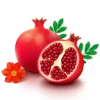
- Pomegranate: Pomegranates are typically in season during the fall, from September to November.

- Indian Gooseberry (Amla): Amla is often harvested in the late summer and early fall.

- Bael Fruit: Bael fruit can have varying seasons depending on the region but is often available in late summer and early fall.
Significance of One-Seed Fruits in Health and Agriculture
One-seed fruits, drupes, or stone fruits hold significant importance due to their nutritional value and contributions to human health and agriculture. Here are several critical aspects of the importance of one-seed fruits:
- Nutrient-Rich: One-seed fruits are packed with essential nutrients, including vitamins (such as vitamin C, vitamin A, and vitamin K), minerals (like potassium, magnesium, and calcium), and dietary fibre. These nutrients are crucial for overall health and well-being.
- Dietary Fiber: One-seed fruits are a good source of dietary fibre, which promotes digestive health by preventing constipation, aiding in regular bowel movements, and supporting a healthy gut microbiome.
- Antioxidants: Many one-seed fruits are rich in antioxidants, such as flavonoids and polyphenols, which help protect the body from oxidative stress, reduce the risk of chronic diseases, and support healthy ageing.
- Heart Health: The potassium content in one-seed fruits helps regulate blood pressure, reducing the risk of hypertension and cardiovascular diseases. Their low saturated fat content also contributes to heart health.
- Weight Management: One-seed fruits, low in calories and high in fiber, can help with weight management by promoting satiety and reducing overeating.
- Skin and Hair Health: The vitamins and antioxidants in these fruits contribute to healthy skin and hair. Vitamin C, for example, is important for collagen production and skin elasticity.
- Eye Health: Certain one-seed fruits, such as apricots and papayas, are rich in vitamin A, crucial for maintaining good vision and eye health.
- Bone Health: One-seed fruits like plums contain vitamin K and calcium, which are important for bone health and blood clotting.
- Hydration: Fruits like watermelon have a high water content, helping to keep the body hydrated, especially in hot weather.
- Natural Sweetness: One-seed fruits offer a natural and nutritious source of sweetness, making them a healthy alternative to processed sugars and sweeteners.
- Culinary Versatility: These fruits are used in various culinary applications, from desserts and jams to savory dishes and beverages, enhancing various recipes’ flavor and nutritional value.
- Agricultural Significance: Many one-seed fruits are economically important crops, supporting agriculture and providing livelihoods for farmers. They also contribute to biodiversity in farming systems.
- Cultural and Culinary Traditions: One-seed fruits are often integral to cultural and culinary traditions worldwide. They are used in traditional dishes, celebrations, and festivals.
- Global Trade: Some one-seed fruits are traded internationally, contributing to global commerce and economic exchange.
- Medicinal Uses: Certain one-seed fruits have traditional medicinal uses, such as remedies for digestive issues, respiratory problems, and skin ailments.
Conclusion:
We’ve learned about some amazing fruits with only one seed. These fruits, often called “one-seed fruits,” come in various shapes, sizes, and flavors, making them delicious and nutritious.
Some popular one-seed fruits include apples, cherries, peaches, and plums. These fruits taste great and provide essential vitamins, minerals, and fiber that keep us healthy.
So, the next time you enjoy a juicy apple or a sweet cherry, remember that you’re enjoying one of the many one-seed fruits nature offers. They are tasty treats and a great way to stay healthy. Keep exploring the world of one-seed fruits, and you’ll discover even more tasty options!
Which fruit has only one seed?
The avocado is a fruit that typically has just one large seed inside.
What are the 5 one-seeded fruits?
Some common one-seeded fruits are cherries, peaches, plums, apricots, and olives.
What two fruits have only one seed?
Two fruits with a single seed each are the cherry and the peach.
What foods contain a single seed?
Foods like watermelon and cucumber contain numerous seeds, but each is relatively small and considered single-seeded.
Which seed has one seed?
The sunflower seed is an example of a typically solitary seed within its shell.
What are three single-seeded fruits?
Three examples of single-seeded fruits are cherries, peaches, and apricots.
Is an apple a single-seed fruit?
No, apples typically contain multiple seeds, not just one.
Which dry single-seeded fruit?
The almond is a dry, single-seeded fruit.
Is an apple a single seed or not?
An apple is not a single-seed fruit; it contains multiple seeds.
Are strawberries single-seeded?
No, strawberries are not single-seeded; they have numerous tiny seeds on their surface.
How many seeds are in a papaya?
Papayas can contain many seeds, but the number can vary. Some papayas may have hundreds of seeds.
How many seeds are in a guava?
Guavas typically contain numerous small seeds rather than just one.
How many seeds are in a banana?
Bananas are generally seedless, so they don’t have the typical seeds in many other fruits.
How many seeds are in a mango?
Mangoes usually have one large, flat seed in the centre.

Hello! I’m Yash Pandya, a dedicated Horticulture Manager at Nayara Refinery. With a passion for creating breathtaking green spaces, I manage a lush landscape and a thriving orchard of 90,000 mango trees.
Expertise: 🌿 Horticulture Management: I plan and maintain gardens, ensuring tranquility and beauty. 🌳 Mango Orchard Expert: I optimize mango yields and health using advanced techniques. 🌺 Landscape Design: My designs harmonize aesthetics with eco-friendly practices. 🌍 Collaboration & Leadership: I foster teamwork, empowering my team to excel.
Experience:
Horticulture Manager at Nayara Refinery.
Student Placement Coordinator: Facilitated student-company connections.
Research And Development Intern: Worked on organic farming practices.
Let’s connect and continue cultivating a greener, more beautiful world! 🌱 #HorticultureManager #LandscapeDesign #SustainabilityInAgriculture

